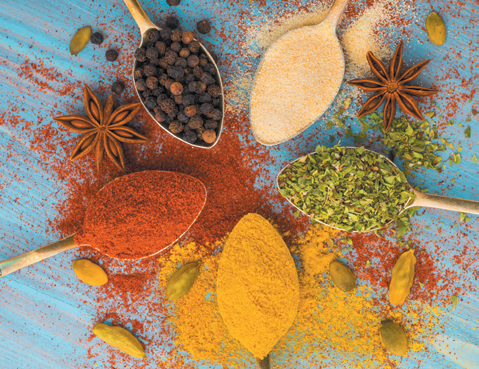A. Helen Rasmussen, PhD, RD, an instructor at the Friedman School, as well as a senior research dietitian in the Metabolic Research Unit at the HNRCA, answers: “Herbs, such as rosemary, thyme, basil, and oregano, come from the leafy part of plants with non-woody stems. Sold fresh or dried, they are generally used in larger quantities than spices. Spices, which are mostly sold dried, are either whole or ground, and include things like peppercorns, cumin, cinnamon, and turmeric. They have a stronger flavor than herbs, so less is typically used. Onions and scallions, garlic, fresh ginger, and chili peppers are examples of plants generally categorized as vegetables but commonly used as seasonings.
“A general guideline to determine equivalents for different forms of herbs is: 1 tablespoon fresh herbs = 1 teaspoon dried = ¼ teaspoon ground. While uses and combinations are endless, see the chart below for some ideas of what foods pair well with some common herbs and spices.”
| Herb/Spice | Pairs With… |
| Basil | Fresh tomato, tomato sauce, vegetables (spinach, zucchini), fish, chicken, pasta, whole grain bread, berries, watermelon |
| Ginger | Poultry, fish, shrimp, sweet potatoes, roasted carrots, winter squash, marinades, curries |
| Oregano | Tomato sauce, chimichurri, Greek salad, pasta, poultry, stew, vinaigrettes, eggs, squash, marinades |
| Parsley | Pasta, whole grain salads and side dishes, dips, eggs, lentils |
| Rosemary | Poultry, potatoes, mushrooms, stuffing, stews, cauliflower, fish, bell peppers, peas, marinades |
























